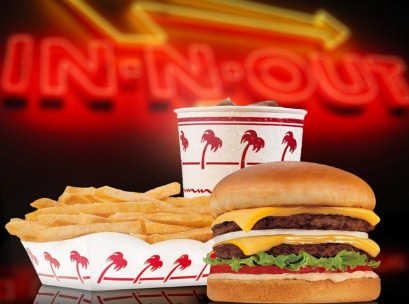“Food is our common ground, a universal experience.” James Beard IBISWorld reports that the Australian fast food industry pulls in $14.8 billion a year, and saw an annual growth of 2.4 per cent between 2011 and 2016. While that is expected to slow to 0.6 per cent between 2016 and 2021, the industry is also predicted to undergo big changes as digital technology changes the way many fast food operators and customers interact. Retailers offering fast food delivery, such as Domino’s Pizza
and Pizza Hut, have developed online and app-based ordering systems over the past few years. These systems have been particularly popular with younger, tech-savvy consumers (the industry’s core age demographic), as they reduce the effort of ordering takeaway. This trend is mainly focused on made-to-order meals such as pizza, where ordering ahead of time, or choosing different delivery options provides a tangible increase in convenience.
Other websites, such as Menulog, have been changing the way people choose and order fast food. The orders are then relayed to the operator for processing and delivery. These websites provide a key sales avenue for smaller fast food providers, giving them access to an online ordering platform with significant customer traffic without having to invest in a website, ordering system and promotional activity.
However it is not just app-based ordering systems that are proving popular with Australia’s millennial foodies. So far this year we have seen several food retailers gain significant growth and brand awareness through elaborate product launches, publicity stunts and concept stores, all utilising the power of social media amongst millennials.
Over the next couple of weeks we will take a look at three examples of retailers who are effectively utilising the power of social media but also have another thing in common – a Willy Wonka-esque golden ticket strategy.
This week we explore the mighty success of In-N-Out Burger.
The In-N-Out Burger chain, founded in California in 1948, has developed a cult following for it’s simple but tasty burgers. When the popular burger chain opened a pop up in Surry Hills, Sydney, the store sold out of burgers half an hour before the store even opened. While the pop up didn’t open until midday, staff were handing out wristbands to customers queued around the block, with a one-burger-per-person policy for the first lucky 300.
So how did they do it? The brand has a pared back menu with only three burgers on offer and a global reputation for fresh, cooked to order burgers at incredible prices (the basic hamburger just over $US2). In-N-Out is only available on West Coast of the US, lending an air of exclusivity to the brand, and ensuring a huge level of hype when the brand takes a pop up store to a new location.
Finally comes the golden ticket strategy leading to ultimate social media bragging rights for consumers. The combination of strong media coverage pre-launch, with communication of limited stock, limited time and ‘highly Instagrammable’ looking food, branding, packaging and store layout makes this a recipe for millennial success.
In next week’s column, we’ll explore two more case studies and break down the components of how retailers can utilise this ‘golden ticket’ strategy, to ensure a highly successful product or brand launch.
Brian Walker is founder and CEO of Retail Doctor Group and can be contacted on (02) 9460 2882 or brian@retaildoctor.com.au.
Vikki Weston, co-author of this column, is part of Retail Doctor Group’s Retail Insights team and can be contacted via email at vikki@retaildoctor.com.au .
Access exclusive analysis, locked news and reports with Inside Retail Weekly. Subscribe today and get our premium print publication delivered to your door every week.

